31 Days, 31 Lists: 2022 Easy Books and Early Chapter Books

In no particular order, here are the types of children’s books that I think are the most difficult to write well: Easy Books, Early Chapter Books, and Board Books. You could dash any of these off with a wave of your hand, but would they be any good? Sit down with a Frog and Toad book one of these days and just gape for a while over the perfection of that writing.
The books on today’s list may not all be up to Arnold Lobel standards of literature, but by gum they pack a lot into their tiny packages. You know the drill. Easy Books come first. Then the Early Chapter Books (which go by a myriad number of names, including Young Readers or just plain old “Chapter Books”).
ADVERTISEMENT
ADVERTISEMENT
Interested in previous years? Then check out the following. Just note that in the past I’d turn Easy Books into their own list and Early Chapter Books into their own list. Something I may consider doing again someday . . .
2022 Easy Books
Baby Squeaks by Anne Hunter
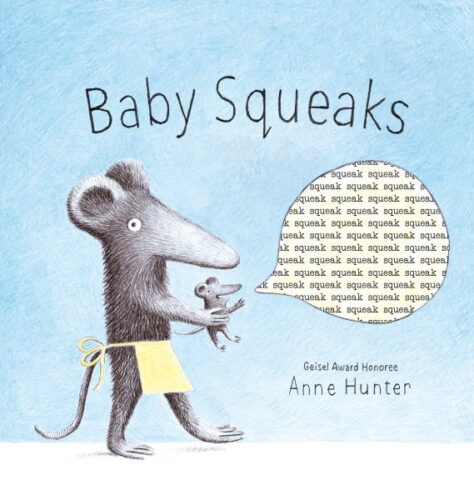
Every year a small cadre of librarians around the country try to predict what might win the Geisel Award. This is the award given out by an ALA committee every year for easy readers, basic readers, beginning readers, or whatever it is your library happens to call them. Now the simple way to go would be to just concentrate your efforts entirely on books marketed for these sections. You know the ones I mean. They tend to have dimensions around 9” X 6”. But then there are those picture books that also qualify. And Anne Hunter is certainly a current reigning queen in this area. Baby Squeaks simply marks the latest of her titles and, for me anyway, may be my favorite so far. I mean, just look at that mom’s expression on the cover. So much can be done with such wide eyes. I love that her baby, which is perpetually squeaking, does so with speech balloons that are utterly filled up with a perpetual typewritten page of text, all reading “squeak”. It’s sort of a perfect combo of simple words and art created for the most part with ballpoint pens and colored pencils. I like books to combine charming with strange. This book hits that sweet spot.
Ballet Bruce by Ryan T. Higgins
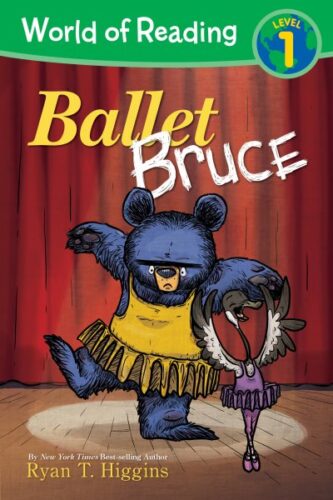
Bruce’s geese want to learn ballet. That means grumpy old Bruce has to run out and get them what they need. Or does he? Well, I’m not usually a sucker for a series title and I’m not easily charmed by the Bruce books in general. I’ve always admired their art, but something about Bruce has always sort of rubbed me the wrong way. Not so this book. I just think this really works well. It utilizes the rule of three brilliantly, the art is top notch, and all told I’m going to have to go out on a limb and say that this is the strongest Bruce book to date. Best of all, it stands entirely on its own. No need to have read others.
Billy & Rose: Forever Friends by Amy Hest, ill. Kady MacDonald Denton
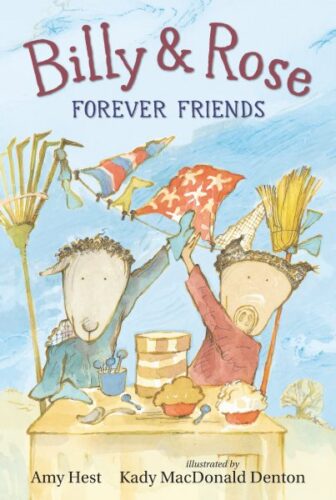
Two best friends share four small adventures over the course of four seasons. From selling ice cream in the snow to practicing cello with their chores, Billy and Rose may sometimes fight but they are always best friends forever. Any time you see a book illustrated by Kady MacDonald Denton you grab, I mean GRAB, that title as quickly as you can. Denton’s a Canadian illustrator who produces a book once every three years, or so, so don’t blink or you might miss it. She’s also so enormously talented that it’s hard to discuss anything else when I’m in the presence of her art, but I’ll try. But before I do, can I just point out why this cover works as well as it does? Look at Rose here. Notice that she is high fiving Billy not with her right hand, but with a left hand that is reaching across her body. And there is just something about the realism of that awkward move that makes the book look that much more appealing. Pairing Denton with Hest was a clever move too. Their styles complement one another very well, with four short, original stories this feels a little like Bink and Gollie and a little like Charlie and Mouse and a whole lot like nothing but its own original self.
El Toro & Friends: Team Up by Raúl the Third, colors by Elaine Bay
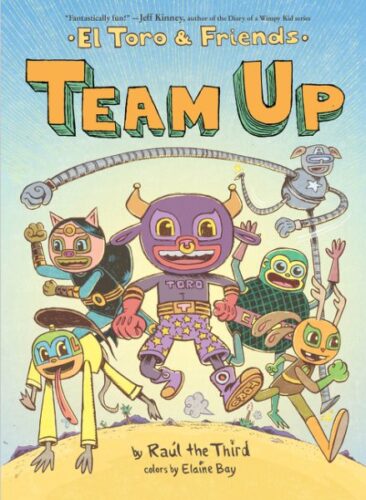
I’ve already included one “El Toro & Friends” book on my lists this year (see: Board Books if you don’t believe me) and like any good marketers, Raúl the Third and Elaine Bay are spreading themselves throughout the different kinds of children’s books out there. Board books? Check. Picture books? Check. Before we get into early chapter fare it’s time to look at easy books as well. I rather enjoyed the amount of plot that they were able to work in with this l’il El Toro title. The characters you might have seen in other books are presented here as kids, learning wrestling moves from the great Ricky Ratón. Of course the joke of this is that Ricky is rat-sized while his students are pig, bull frog, etc. sized. Even so, none of them can beat him in single combat. How will they pass their final test if they can’t defeat him in battle? The action scenes cannot be beat and the ultimate lesson is nicely learned. Looking forward to more in this vein, yep!
Even Robots Aren’t Perfect by Jan Thomas
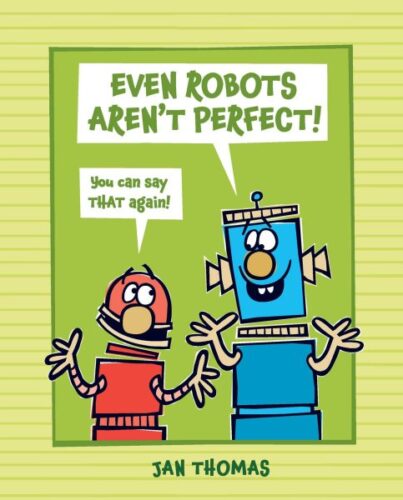
Think robots never make mistakes? Think again! Join two best friends as they navigate the ins and outs of friendship and owning up to your own errors. Okay, I love Jan Thomas already, but her easy books have to be taken on a kind of case-by-case basis. I’d say that some are stronger than others. This one? Quite on the strong side. And when considering this book, I’ll tell you right now that of the three stories in this easy reader, my favorite is the second. Probably because it contains the lines “I didn’t MEAN to make you fly away!!! But sometimes we just make each other fly away…” “We DO?” It’s a goofy little exercise with jokes that land and a good payoff.
Gigi and Ojiji by Melissa Iwai
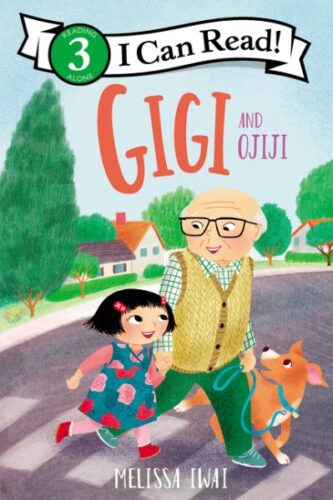
It’s so exciting! Gigi’s grandfather is coming to live with her family all the way from Japan. But when he doesn’t immediately live up to what she imagined him to be, can they ever be friends? Big emotions and complex cultural differences are explained with incredibly simple words. I know how hard it is for writers to write books this easy with such a limited word count while also attempting to tackle the big issues that Iwai, anyway, is handling with aplomb. This whole book is about expectation vs. reality. Gigi’s disappointment with her grandfather is understandable, and I thought the parental explanations made a lot of sense too. Worth your consideration.
I Did It! by Michael Emberley
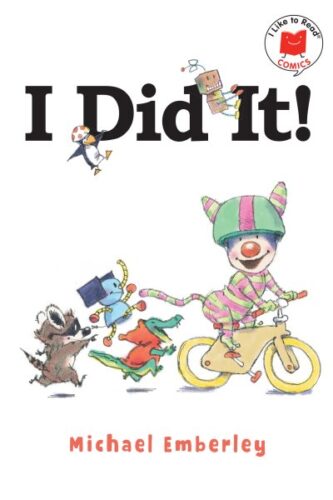
A lovable little creature wants to learn how to ride a bike. When it keeps falling and falling will it give up? Very easy language accompanies this ultimately triumphant tale. In many ways an easy book has to take its cues from silent filmmaking. With just a minimal number of words you must indicate whole worlds and ideas. Michael Emberley is a legacy children’s book creator, being the son of Ed Emberley and all, but he’s always utilized his own unique style. Here he creates just the most charming little world, where robots, toys, and kitten-like critters in pajamas live their own lives. The reviews, and even the book’s publication copy itself, refuse to identify what the protagonist of this story even is (relying instead on the term “creature”). What we do know is that it wants to ride a bike but it’s going to take a lot of falls and failures before its eventual success. Love that simple language. Love that it’s an easy book that is actually full of easy words (and doesn’t try to cheat with an extraordinarily long one here and there). Just love it in general.
I’m Not Small by Nina Crews
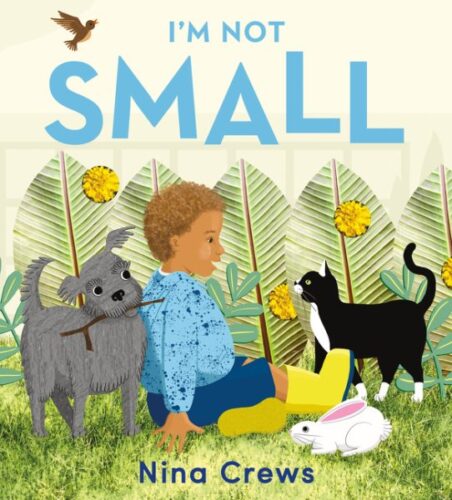
A boy steps into his big backyard and notices what is both bigger and smaller than him. Crisp graphics and concise language explain the concept big and small in a very lovely way. I am on board with putting this picture book in this easy book category. This is another take on the little/big concept for children, but it’s also subtly giving kids the impetus to declare that in a world where they are small, there are still some places where they tower. I would never have known that this was digital, since I’m so used to Ms. Crews collaging her photographic work. Definitely a strong easy title contender and it even manages to do a bit of an emotional punch with those last two lines. Watch out, Geisel committee!
I’m Ogre It by Jeffrey Ebbeler
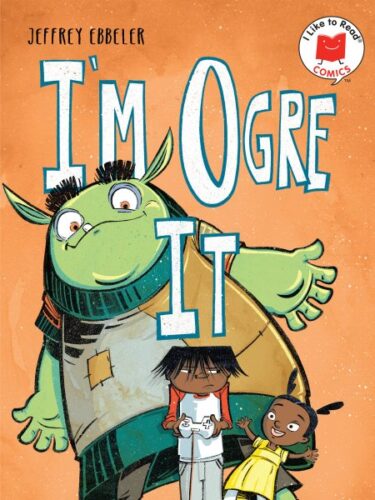
Boy. Jeffrey Ebbeler got the assignment from Holiday House to write one of their “I Like to Read” books and decided to take a big old swing. And you know what kinds of books I like? I like big swing books, baby. And it doesn’t get much bigger or swingier than an easy book with high fantasy ideals. The whole premise of this book is that a girl’s older brother is video game-obsessed and won’t really play with her anymore. When a family of ogres moves in next door (like ya do) she teams up with their son and the two of them come up with a game so enticing, even her brother can’t resist. It’s a kind of put-down-the-video-games message but not in a preachy way. Plus, any easy book that replicates the feel of a game with different levels is instantly interesting to me. Fun and strange in equal turns.
It’s a Sign! by Jarrett Pumphrey and Jerome Pumphrey
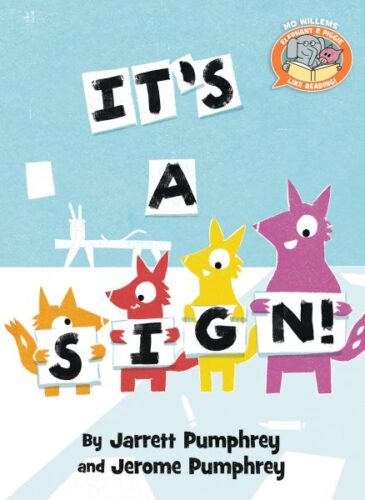
When starting a club, it’s good for everyone to have a talent. But what happens if everyone has a talent for everything except naming clubs? A colorful tale with easy and funny words. What clever soul figured out that the Pumphreys would make natural easy book creators? This book is an interesting test case. I very much like the art in it, with its colorful … would you call these foxes? Let’s call them foxes. It has the requisite gag at the end, very much in keeping with the usual format of Mo’s “Elephant and Piggie Like Reading” series. It’s neat. And there is room enough in this world (and on this list) for “neat”.
Meet the Super Duper Seven by Tim Hamilton
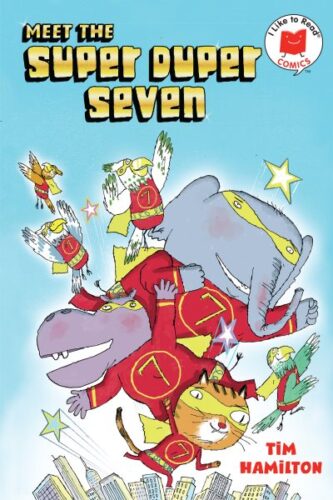
The Super Duper Seven are here to save the day! Wait, scratch that. Hungry Kitty just ate four members. How can the team stick together when members keep, ah, disappearing? Welp, color me a convert. Have I mentioned enough times how hard it is to write easy books for kids? Let me rephrase that. How hard it is to write GOOD easy books for kids. After all, any joe schmoe can write a book. I swear I’ve seen Tim Hamilton books before but the man has really hit his stride with this title. Part of my love is probably based in how funny I find it when one character eats another. And the moment the team members yell at Hungry Kitty for eating the birds and they say, “You ate them? But they’re on the cover of our book!” I was in love. The repetition is used beautifully here and I legit found it funny. It does beautiful things with the rule of threes. Add in a satisfying ending AND simple words all the way through and you’ve got yourself a new easy reading winner.
Owl and Penguin by Vikram Madan
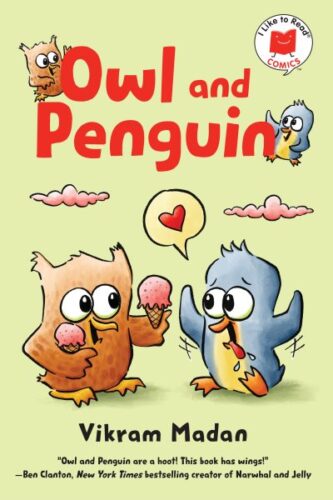
Three little stories about two little friends. Owl and Penguin may be different but when it comes to helping one another they love each other exactly the same. Fun Fact: I’ve actually had Madan on one of my lists before when he wrote that fun poetry book A Hatful of Dragons a year or so ago. This book is a departure into deep easy reading territory which is, as I’m sure you know, incredibly difficult to do. I was gratified by the simple storylines, particularly when they went in directions I didn’t predict. The first story about the penguin continually dropping the ice cream is particularly funny. Easy’s hard and these stories are good. Worth some consideration.
Reina Ramos Works It Out by Emma Otheguy, ill. Andrés Landazábal
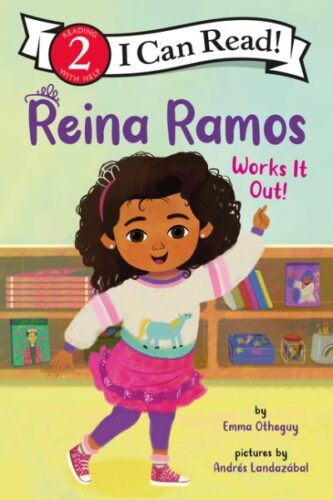
Like Gigi and Ojiji, these simple little I Can Read books are really upping their game this year. I stand impressed. Most easy books don’t really bear down and tell a more complex story, in large part because of the age and reading level of the audience. But that doesn’t mean you can’t tell a good tale with ups and downs and misunderstandings and a little conflict. I like a book where my protagonist isn’t always in the right, and I get that with this Reina Ramos book. In this story the kids are doing that wax statues thing that I did when I was a kid, but haven’t seen in books for kids very often. Basically, you dress like a famous person, memorize facts about them, the whole kerschmozzle. Reina wants to be Frida Khalo but when her best friend mistakenly asks for Frida instead, Reina is seriously peeved. It has good strong conflict resolution. Simple words, but not simple ideas.
2022 Early Chapter Books
Bee and Flea and the Compost Caper by Anna Humphrey, ill. Mike Deas
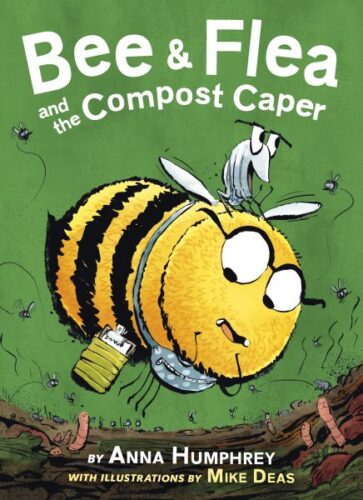
Now we leap from older nonfiction books to early chapter fiction titles. Bee is bored. She wants to do more than just collect pollen all day, so when Flea hires her to join her investigation into the local compost heap, she’s on board. A magnificent deep dive (literally) into the ecosystem of compost and soil. I like it! I like how weird it is, and how beautifully it really works in the natural ecosystem of a typical compost heap works. I suppose it’s not technically to scale, but who cares? The science is interwoven seamlessly into the storyline, and while there’s probably a lot more poop in there than I’d personally prefer (which makes it ideal for today’s list), you can’t say it isn’t necessary. Love that Flea and Bee have such strong personalities right from the start too.
Bumpfizzle the Best on Planet Earth by Patricia Forde, ill. Elīna Brasliņa
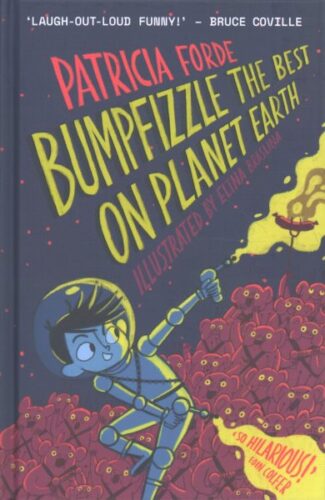
The great Bumpfizzle of the Planet Plonk is on a mission to Earth so secret that not even HE knows why he’s here! Disguised as a human boy, he must deal with the daily injustices of being a kid. Hijinks definitely ensue. This is a lot of fun. It’s a great unreliable narrator story, and Bumpfizzle has this lovely slow change of heart towards the humans he’s essentially stuck with. It would be easy to think of this book as the delusions of a kid so thoroughly into aliens that he’s convinced that he is one, but by the end it’s pretty clear that he really is who he thinks he is. I was a bit worried about the fate of the cat when he initially got rid of it, but no dead cats in this book. Just some seriously pissed off ones.
Cornbread and Poppy by Matthew Cordell
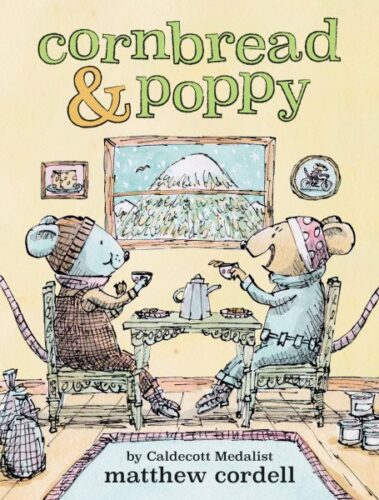
This is one of those books that really straddle the line between easy books and early chapter titles. Slightly more advanced than a Frog & Toad, this book is a marvelous kickoff to what has already proven to be a charmer of a series. It begins with your classic Grasshopper & the Ants type situation. Cornbread’s the kind of guy who stores up his food for the winter well in advance of the first frost. Poppy? Yeah, not so much. This little mouse would rather get in one last swing or one last hike before even thinking about food prep. As you might imagine, this goes disastrously when the two discover that there is no more food to be had. Or isn’t there? There’s a possibility of food up on Holler Mountain, though it has a terrifying reputation. Adventure awaits! Cordell manages a really delightful tone with this book, that pairs beautifully with the storyline. He utterly nails the ending too, which is not an easy thing to do in a book of this length. I, for one, welcome more books to this series and your kids most certainly will too!
Different: A Story of the Spanish Civil War by Monica Montañés, ill. Eva Sánchez Gómez, translated by Lawrence Schimel
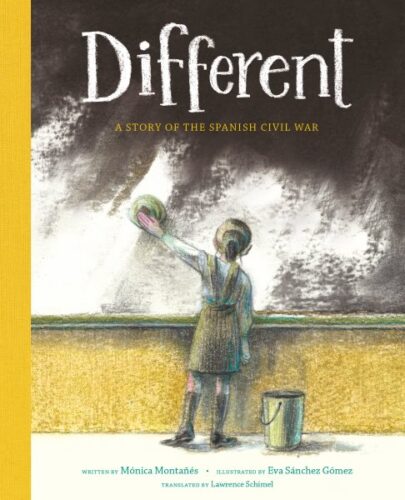
Apt title, I think. Some imports have entirely different lengths than American publishers are used to. Case in point, a fiction title that has the maturity of a work for 9-12 year olds but a page count seemingly ideal for early chapter books. As such, you could consider this a kind of Hi-Lo reader for older kids. The story of how the Spanish Civil War rips a family apart reads almost more like a short story in the New Yorker than a title for children, though there’s nothing inappropriate on the pages. In this tale we follow two siblings, Paco and Socorro. Paco is nine and is always hungry. Socorro is seven and never eats. When their father has to leave Spain because Franco is persecuting everyone who opposes him, they find themselves outcasts in their own country and hungry without their father’s income. The happy ending comes when the family moves to Venezuela and at last finds a place that may be strange, but offers so much food, sunshine, and family that they acclimate. Of course, I got to the end of the book and then immediately wanted to grab a book on Venezuelan history to see what might happen to them next. It’s a good story that invests you so fully in a family’s trials and tribulations that you want to keep the story going long after that last page.
Esme’s Birthday Conga Line by Lourdes Heuer, ill. Marissa Valdez, edited by Samantha Swenson
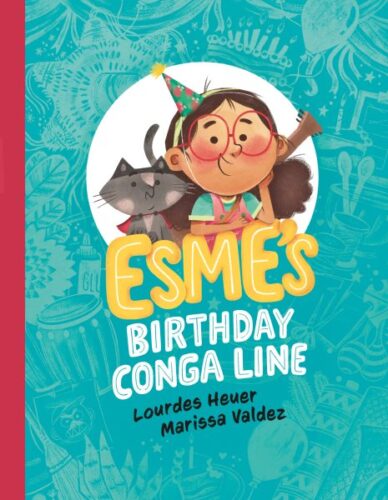
What do you do when your grandparents forget to throw you a birthday party with cake and a pinata? Throw your own! Esme is determined to get her neighbors together for the ultimate party time. Can she pull it off? Ooo. I really and truly enjoyed this. It sort of looks like a lot of other older easy/early chapter books out there, but it has it own, strange, quirky take on things. Essentially, this is a bold, tunnel-visioned, unreliable narrator with a TON of enthusiasm and energy. There’s something very appealing about heroes that just boldly go out to solve their own problems, even if they’re entirely oblivious of their effect on other people. I love how the book allows the reader to figure out what’s going on even when Esme has no clue. The art goes a long way to carrying the humor, which is a nice touch. There’s almost a Looney Tunes feel to it too, what with the trials and tribulations that Manny, the building supervisor, has to put up with thanks to Esme (the flames are a nice touch). Two thumbs way way up!
Free Kid to Good Home by Hiroshi Ito, translated by Cathy Hirano
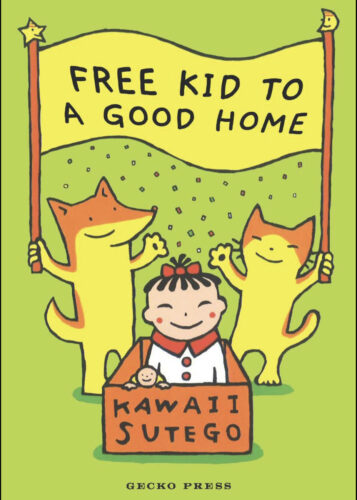
When the new baby (a.k.a. “Potato-face”) sucks away all the parental attention, one determined little girl decides to give herself away for free to a better home. A tongue-in-cheek tale of figuring out where you really belong. This Japanese import is the kind of thing I like to see in a pile of potential easy and early chapter books (categories that this title straddles completely). At first this reminded me of that old Shel Silverstein poem “Sister for Sale” but the premise is more droll than that. It would actually work well as a picture book, come to think of it. I enjoyed its mildly sardonic feel. I do wish that it were just a LITTLE clearer that the parents at the end are her own parents. Otherwise, I’m kind of charmed by the whole enterprise.
Just Harriet by Elana K. Arnold
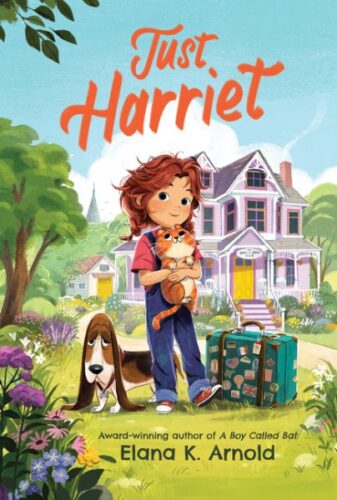
Even if she understands why her parents are shipping her off to her grandmother’s bed and breakfast for the summer, that doesn’t mean Harriet wants to go. That is, until she stumbles on a mystery with a connection to her dad when he was just a boy. Elana K. Arnold is so interesting. She really straddles that area between older and younger chapter books. So this book falls into that nowhere’s land, between being comfortable reading on your own, but still needing shorter chapters and the occasional picture to get you through. I thought Harriet was a nicely flawed character, and she does that thing that kids do when they feel horrendously guilty about something relatively small. The mystery is actually pretty darn good, and naturally this made me YEARN for a bed and breakfast to visit on my own. Very sweet.
Leave It To Plum by Matt Phelan
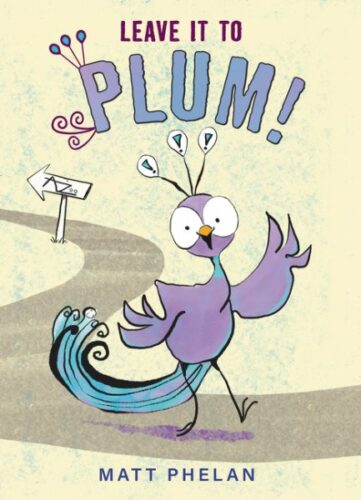
When a small mammal with an oversized ego tries to take over the zoo, just leave it to the big-hearted peacock Plum to save the day! I consider this the book that taught me that a ningbing is carnivorous (shudder). You know, if I hadn’t walked into this knowing that Matt Phelan was the creator, I don’t necessarily think I would have recognized it immediately as one of his own. It marks a bit of a contrast from his other 2023 chaptered creation The Sheep, the Rooster and the Duck. Here you have a good-hearted peacock solving mysteries, making friends, and trying to outsmart a Brain-like (ala Pinky and the Brain) ningbing. You can almost hear it voiced by Maurice LaMarche . . .
Maddie and Mabel by Kari Allen, ill. Tatjana Mai-Wyss
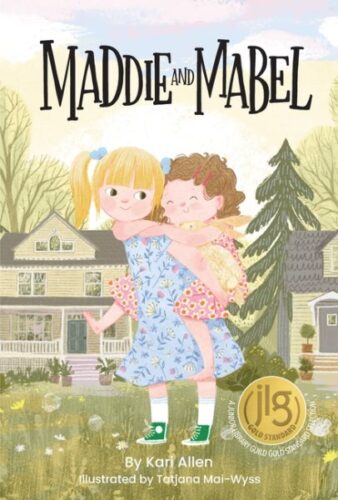
Five short stories tell the tales of sisters Maddie and Mabel. Can a big sister and a little sister be friends? Sweet and smart tales with just the right amount of spice. Aww! You know, writing these kinds of books can often devolve into treacle. You gotta admire Ms. Allen’s dedication to getting this heart sans schmaltz onto the page. Plus I love the work illustrator Tatjana Mai-Wyss is putting into this. That shot of Maddie’s wide-open eyes on the final page is perfectly done. It’s not big and flashy or anything but there’s a lot to be said for a book this tight and succinct and, in just the right way, silly.
Miles Lewis: Whiz Kid by Kelly Starling Lyons, ill. Wayne Spencer
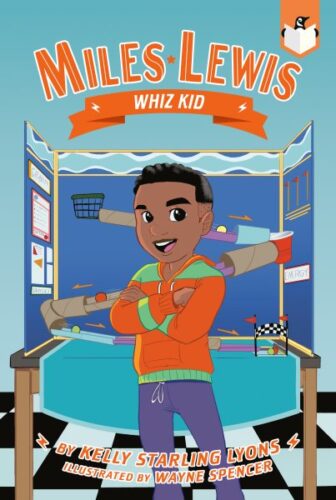
ADVERTISEMENT
ADVERTISEMENT
Whenever a new early chapter book series comes out in a single year and they release two titles at once, I always like to read both to see which one I like better. Now you may see that this new Miles Lewis series has labeled Whiz Kid as #2, but I would have you know that I like it better than its companion title (and technical predecessor) King of the Ice, and that’s a hill I’ll die on. Nothing against King of the Ice, mind you, but there are some big big feelings (to quote Dragon Prince) going on in Whiz Kid that eclipse the other title. You see, Miles is kind of a science guy. He’s got his eyes on making sure that his team’s science fair project going to the regional competition. Trouble is, throughout the course of this book he’s being eaten away with jealousy and self-doubt. Lyons has always been particularly good at making the basic emotional ups and downs of everyday life for third and fourth graders feel real on the page, making this particular title is a primo example of what she does best. I also appreciated how well the project does at the end (which is to say, it actually doesn’t make the topmost slot in the competition) and how that’s okay. A hard level to write for by a writer who knows what she’s doing.
Forever Truffle: Three Stories by Fanny Britt, ill. Isabelle Arsenault, translated by Susan Ouriou
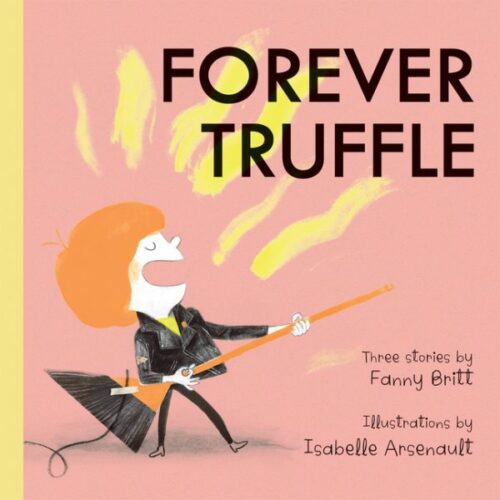
Three little stories introduce us to Truffle, a kid that wants to start a band, adores his classmate Nina, and has some pretty big questions when his great-grandmother dies. It’s a charming, engrossing trio of tales. Initially I looked this book over a couple times, trying desperately to figure out where exactly one would categorize it. Honestly, while I’m placing it in the early chapter book section, it could just as easily be placed in the picture book or even graphic novel sections and would fit just as well. Britt and Arsenault have done books together before, but this is much younger, sweeter, and more innocent than their other titles. It is also charm incarnate. Seriously, this book could teach other authors a thing or two. Truffle is wonderful, his friends are wonderful, and I even like his brother Louis of whom it says, “Now that he’s in high school, he’s into robotics, basketball and sarcasm.” Turns out, Louis was the star of a very serious YA graphic novel by this pair call, easily enough, Louis. That sort of gives this book an entirely different flavor (but only if you’ve read Louis and realize that the dad suffers from severe depression). I just love love love this little weird book
Pets Rule: My Kingdom of Darkness by Susan Tan, ill. Wendy Tan Shiau Wei
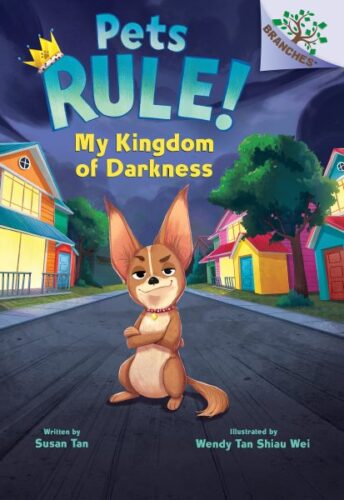
Small dogs that think they are mighty are funny. Small dogs that think that they are evil geniuses? Funnier still. Now we’ve seen variations on this theme over the years. Why on this very list you have Leave It to Plum and its ningbing. And this year there was that film DC League of Super Pets with its hamster set on, you guessed it, world domination. Heck, even Bumpfizzle (also mentioned on this list) is along these lines. The point is that while the basic premise of this book is familiar, it’s what an author does with that trope that’s more important. Here we have a chihuahua bound for badness, but stymied by a couple problems. 1: A loving newly adopted family (particularly the girl child). 2: Friendly fellow pets. 3: A bully squirrel with a gang who may, in fact, be more evil than he is. The book turns, as so many baddies-turned-good tales do these days, into a spy caper eventually. It also has a killer ending involving a poodle that really, truly, and seriously makes me want to read the next book in the series.
Wednesday and Woof: Catastrophe by Sherri Winston, ill. Gladys Jose
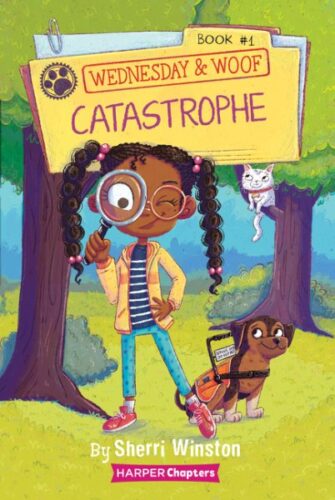
When an opera singer’s beloved cat goes missing, never fear, detective Wednesday and her service dog Woof are here! And what’s more, Wednesday won’t let having juvenile arthritis slow her down. A pretty darn classic young mystery story, that’s for sure. Winston works Wednesday’s juvenile arthritis into the story in a careful balancing act, where you can never forget that she has it but, as the character herself is quick to tell you, the true focus is on the mystery itself. I like the extra added element of the overprotective dad who’s acting the way he is because Wednesday’s still a little new to handling her limits. It hits a lot of familiar beats but that’s not a knock. And I like the small encouragements for new readers that show up at the end of each chapter. A book that helps to keep you going, just like Wednesday does.
Want to see other lists? Stay tuned for the rest this month!
December 1 – Great Board Books
December 2 – Picture Book Readalouds
December 3 – Simple Picture Book Texts
December 4 – Transcendent Holiday Picture Books
December 5 – Rhyming Picture Books
December 6 – Funny Picture Books
December 7 – CaldeNotts
December 8 – Picture Book Reprints
December 9 – Math Books for Kids
December 10 – Gross Books
December 11 – Books with a Message
December 12 – Fabulous Photography
December 13 – Translated Picture Books
December 14 – Fairy Tales / Folktales / Religious Tales
December 15 – Wordless Picture Books
December 16 – Poetry Books
December 17 – Unconventional Children’s Books
December 18 – Easy Books & Early Chapter Books
December 19 – Comics & Graphic Novels
December 20 – Older Funny Books
December 21 – Science Fiction Books
December 22 – Fantasy Books
December 23 – Informational Fiction
December 24 – American History
December 25 – Science & Nature Books
December 26 – Unique Biographies
December 27 – Nonfiction Picture Books
December 28 – Nonfiction Books for Older Readers
December 29 – Best Audiobooks for Kids
December 30 – Middle Grade Novels
December 31 – Picture Books
Filed under: 31 Days 31 Lists, Best Books, Best Books of 2022
About Betsy Bird
Betsy Bird is currently the Collection Development Manager of the Evanston Public Library system and a former Materials Specialist for New York Public Library. She has served on Newbery, written for Horn Book, and has done other lovely little things that she'd love to tell you about but that she's sure you'd find more interesting to hear of in person. Her opinions are her own and do not reflect those of EPL, SLJ, or any of the other acronyms you might be able to name. Follow her on Twitter: @fuseeight.
ADVERTISEMENT
ADVERTISEMENT
SLJ Blog Network
One Star Review, Guess Who? (#202)
Exclusive: Giant Magical Otters Invade New Hex Vet Graphic Novel | News
Parsing Religion in Public Schools
Take Five: LGBTQIA+ Middle Grade Novels
ADVERTISEMENT








Looking forward to reading these with my kindergartener! I also just listened to the most eye-opening 6 episode podcast on how reading is taught from American Public Media and want to recommend it to everyone. The podcast is called Sold a Story and is reported by Emily Hanford https://features.apmreports.org/sold-a-story/
No matter whether you’re a parent, librarian, teacher, or have no connection to reading outside of learning yourself, this podcast is for you. It’s so compelling, informative, and shocking that I highly recommend it to everyone!